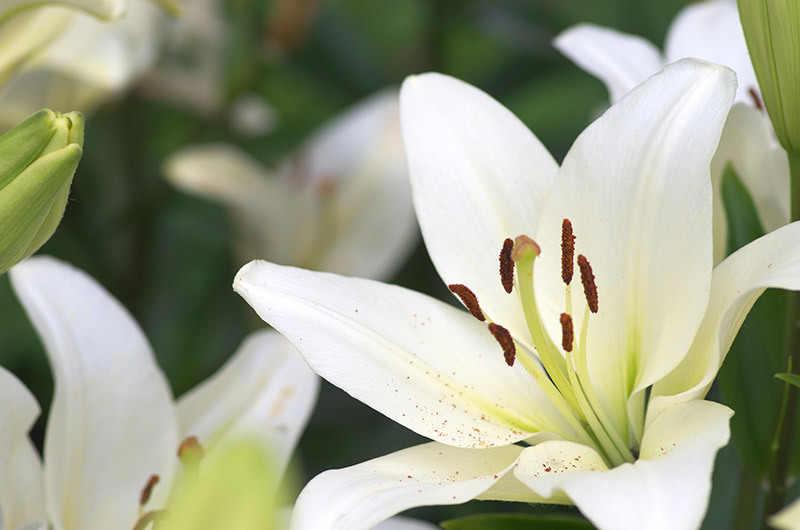Tulips Unveiled: 7 Fascinating Facts Everyone Should Know
Posted on 03/07/2025
Tulips Unveiled: 7 Fascinating Facts Everyone Should Know
Tulips rank among the world's most celebrated and recognizable flowers. Their bright hues, elegant form, and rich history captivate not only garden enthusiasts but people from all walks of life. From ancient legends to modern horticultural marvels, tulips have cultivated a fascinating world of their own.
If you have ever wondered what makes these vivid blooms so special, read on to discover the most intriguing facts about tulips--from their surprising origins to their powerful symbolism and scientific secrets. Here, we unveil seven captivating insights that everyone should know about tulips.
1. Tulips Originated Far from the Netherlands
Tulips are often considered a symbol of the Netherlands, but their roots are in fact traced to Central Asia. Originally, these flowers grew wild in the mountainous regions of what are today Kazakhstan, Uzbekistan, and Afghanistan. The word "tulip" is believed to derive from the Persian word for turban (delband), a nod to the flower's shape and the tradition of wearing tulip-shaped turbans in ancient Persia.
- Tulips were brought to Turkey as early as the 10th century, where they became an emblem of the Ottoman Empire, often featuring in art, poetry, and court culture.
- Their journey continued westward, arriving in the Netherlands in the late 16th century and sparking the legendary "Tulip Mania."
Interesting fact: The first tulip bulbs in Europe were sent by the famous botanist Carolus Clusius, who cultivated them in Leiden's botanical gardens in the late 1500s.
2. Tulip Mania Was the World's First Financial Bubble
Many people are unaware that tulips were at the heart of one of the world's earliest and most notorious economic bubbles: Tulip Mania. In the 1630s, as the flower's popularity soared in the Netherlands, prices for certain bulbs skyrocketed to incredible levels.
- Some rare tulip varieties reportedly cost more than a skilled worker's annual wages--or even the price of a house.
- The feverish trade and speculation led to a sudden market collapse in 1637, marking the end of the tulip bubble.
Tulip Mania stands as a cautionary tale in economic history, illustrating how the allure of beauty, rarity, and novelty can fuel speculative frenzies.
3. There Are Over 3,000 Registered Tulip Varieties
Today, the world of tulips is more vibrant than ever. Horticulturists have bred and registered over 3,000 unique tulip cultivars, ranging from classic single hues to extraordinary multi-colored patterns. These cultivars are divided into 15 official groups, such as:
- Darwin Hybrid Tulips: Known for their strong stems and large, long-lasting blooms--ideal for gardens and cut flower arrangements.
- Parrot Tulips: Recognizable by their fringed, feather-like petals and dazzling colors.
- Triumph Tulips: Popular choices boasting a classic tulip cup and a stunning array of colors.
- Double Early and Double Late Tulips: Featuring lush, peony-like blossoms.
Each type of tulip has unique characteristics in terms of bloom time, height, petal form, and color, making the tulip an endlessly versatile flower for gardens, parks, and floral displays.
4. Symbolism and Cultural Significance of Tulips
The meaning of the tulip has evolved across cultures and centuries, acquiring profound symbolism:
- Love and Passion: In Persian folklore and Ottoman poetry, tulips symbolize perfect love and romantic longing.
- Wealth and Prosperity: During Tulip Mania, the flower became an emblem of affluence among Dutch elites.
- Rebirth and Spring: As one of the first blooms after winter, the tulip is a universal sign of renewal and hope.
- Different colors of tulips hold unique meanings--red for deep love, white for forgiveness, purple for royalty, and yellow for cheerful thoughts.
Tulips even feature in international celebrations--most notably the Canadian Tulip Festival, a legacy of the Netherlands' gratitude to Canada for sheltering the Dutch royal family during World War II.
5. The Science Behind Tulip Colors
What gives tulips their mesmerizing spectrum of colors? It's a fascinating interplay of plant genetics and biochemistry. The vibrant hues owe much of their diversity to natural pigments called anthocyanins and carotenoids:
- Anthocyanins: Produce red, purple, and blue tones in tulip petals.
- Carotenoids: Responsible for yellow, orange, and cream-colored varieties.
Sometimes, intricate patterns and striking "flames" or streaks appear on petals. Historically, these were the result of a virus--aptly called the "Tulip Breaking Virus"--that infected bulbs in the 17th century, creating the most valuable and coveted flowers of the Tulip Mania era. Modern breeders now create bicolor and multicolor tulips using advanced techniques, without the need for viral infections.
6. Tulips Have Surprising Uses Beyond Ornamentation
Although tulips are primarily grown for their aesthetic charm, they have also played unexpected roles in history and contemporary uses:
- Edibility: Tulip petals are technically edible (in moderation), and were used as a potato substitute during World War II's Hunger Winter in the Netherlands.
- Cosmetics and Skincare: Extracts from tulip bulbs and petals are now found in some modern beauty products, prized for their moisture-retaining properties.
- Art and Inspiration: Tulips have appeared in countless works of art, tapestries, ceramics, and even fashion, symbolizing beauty and sophistication.
However, caution is crucial: Tulip bulbs contain tulipalin, a compound that can cause mild poisoning or skin irritation if consumed in large amounts or handled excessively without gloves.
Always verify safety information before using tulip parts for culinary or cosmetic purposes.
7. The Netherlands Still Reigns as the Tulip Capital
Despite their Asian heritage, tulips are now inextricably linked with the Netherlands. Today, this small European country remains the undisputed leader in tulip breeding, cultivation, and export.
- Each spring, millions of tulips burst into bloom across the Dutch countryside, painting landscapes with breathtaking bands of red, yellow, pink, and violet.
- The Keukenhof Gardens near Lisse showcase more than 7 million tulip bulbs every season, attracting visitors from all over the globe.
- According to industry statistics, the Netherlands produces approximately 4.2 billion tulip bulbs each year--80% of which are exported worldwide.
The famed Dutch tulip fields and flower parades are a rite of passage for travelers and a powerful symbol of Dutch cultural pride and horticultural prowess.

Frequently Asked Questions About Tulips (FAQ)
-
Q: When is the best time to plant tulip bulbs?
A: Plant tulip bulbs in autumn, around 6-8 weeks before the first hard frost. This allows roots to establish before winter. -
Q: How long do tulips bloom?
A: Most tulip blooms last 1-2 weeks, but with careful planning (choosing early, mid, and late-season varieties), gardens can showcase tulip color for 4-6 weeks. -
Q: Are tulips perennials or annuals?
A: Tulips are technically perennials, but some modern hybrids are best treated as annuals, especially in warmer climates where they may not naturalize reliably. -
Q: Can I grow tulips indoors?
A: Yes! Forcing tulip bulbs indoors is a popular way to enjoy their blooms during winter. Pre-chill bulbs for 12-16 weeks, then pot and bring into warmth and light for blossoming.

Discovering the Allure of Tulips
From ancient mountain slopes to modern flower festivals, tulips have journeyed through continents and centuries, leaving lasting impressions on art, culture, science, and even economics.
- These flowers are much more than garden favorites; they're emblems of love, resilience, beauty, and the ever-changing cycle of life.
- The next time you see a field of tulips, remember their remarkable history, vibrant diversity, and deep cultural roots.
Tulips unveiled--not simply a flower, but a global legacy that continues to enchant and inspire generation after generation.
Conclusion: Why Tulips Still Matter
In essence, tulips are much more than just beautiful blooms. They bridge history and horticulture, inspire art and commerce, and remind us of nature's power to surprise and delight. Whether you are an avid gardener, a history buff, or simply seeking beauty in everyday life, the world of tulips awaits your exploration. Allow their story to enrich your appreciation of nature's wonders--one petal at a time.
Latest Posts
The Secret Garden of Peony Symbolism: Colors and their Stories
What Does Your Birth Flower Say About Your Character
Red Roses and Valentine's Day: A Love Affair Explained







